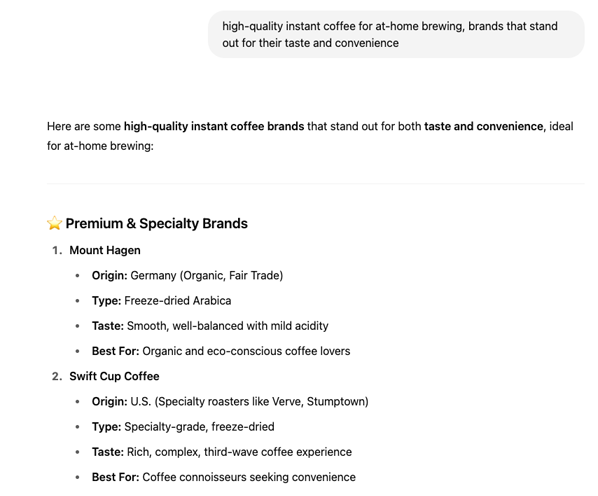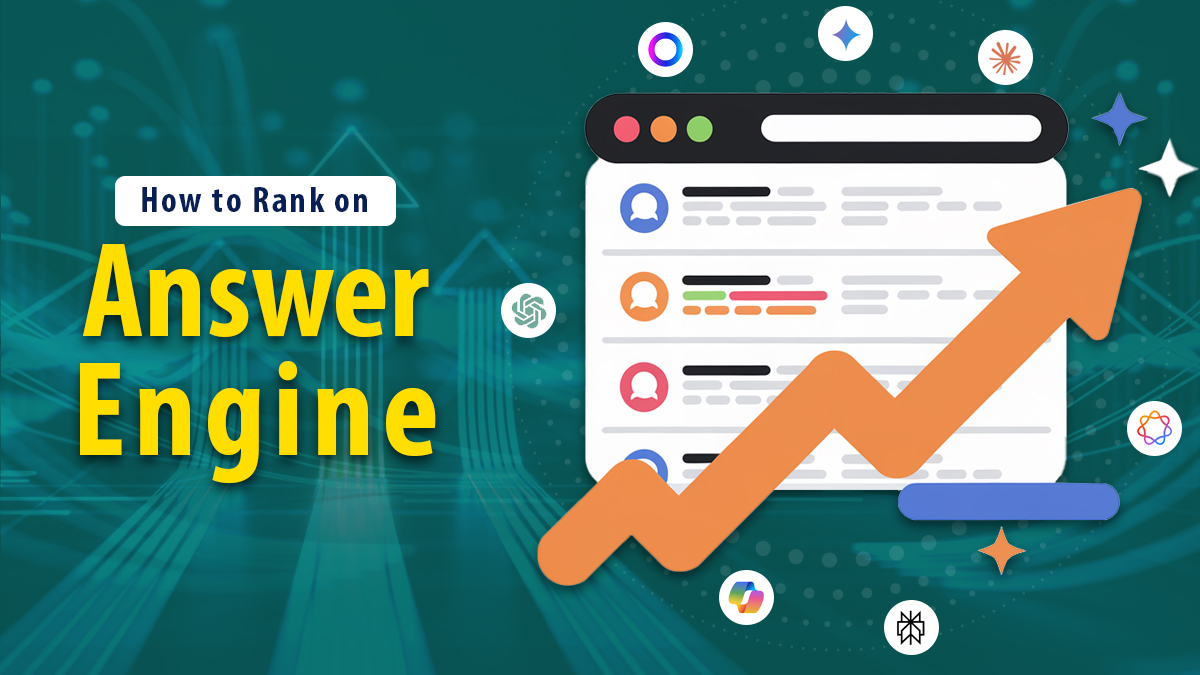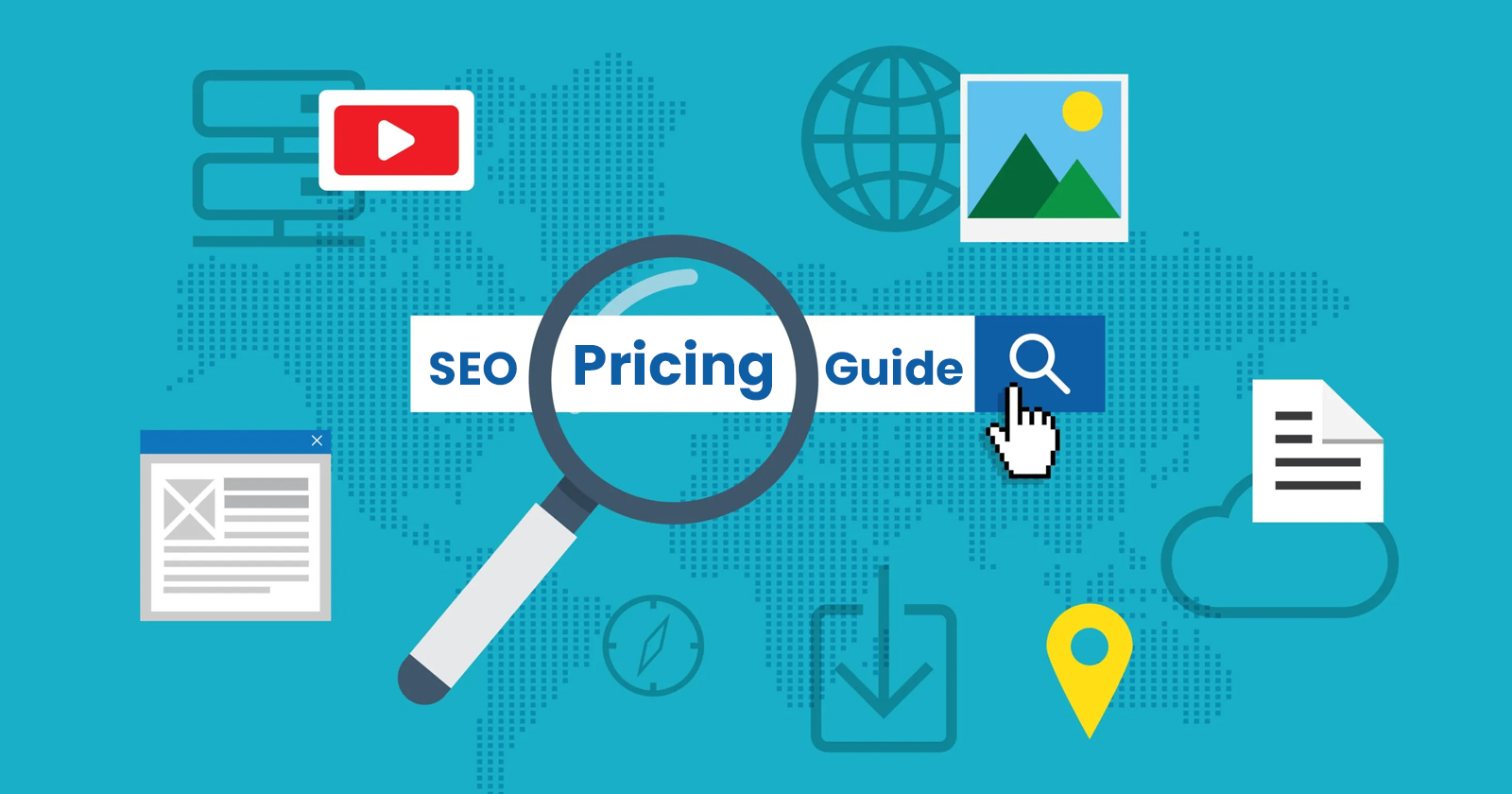As technology changes, regular search engines are being complemented or replaced by AI-based answer engines. These platforms don’t just list and rank websites; they create answers by combining information from different places on the internet.
As a result, things are changing in SEO. To be seen, brands and creators need to improve their content for both Google Search and new smart AI search engines that focus on clear, trustworthy, and brief information.
Unlike regular search results, there are no specific spots or blue links to aim for here. Being visible means that an AI mentions, summarizes, or refers to you in its answers. It’s important to know how these engines work, what kind of information they use, and how to organize your content in the right way.
In this post, we will look at practical tips on how to rank on answer engines. We will also see how to check if your content is being mentioned in these AI results.
How to Rank on Answer Engines?
Learn How Answer Engines Function
SEO begins with learning how search engines work, not just making a website better. The same idea goes for answer engine optimization (AEO). AI SEO services are crucial for optimizing content to meet the evolving algorithms of answer engines, ensuring higher visibility and accurate placement in direct response results.
So, how do answer engines work? Basically, answer engines create answers by:
Training data: It is the information used to teach an answer engine, like ChatGPT or Claude. These knowledge bases can have information from other sources, online data (up to a certain date), and data from within the organization.
Internet data: It is a constantly updated flow of information from the web, like what you see when you search on Google or Bing. Most answer engines need Search to be turned on to use this feature.
Some answer engines combine or improve these choices, like:
- Perplexity only uses information from reliable and trusted websites on the Internet.
- AI Overviews use Google’s information to create summaries that appear in Google search results.
- Apple Intelligence uses Apple products and Google to create results.

It’s important to remember that no answer engine will give the same answer two times. You and a friend can ask ChatGPT the same question and get similar answers, but the way the answers are written will be different.
Users can make their AI experience personal by sharing things like their food likes and how they prefer answers (short or detailed). When we talk a lot, our answers can be more special, just like the brands we talk about.
For marketers, this setup means improving access to training and online information across different platforms. It also means knowing where answer engines get their internet information.
| Answer Engine | Internet data source |
| ChatGPT | Bing |
| MetaAI | Bing |
| Gemini | |
| AI Overviews | |
| Apple Intelligence | |
| Perplexity | Bing |
| Microsoft Copilot | Bing |
Optimize for Search Engines
In addition to using online information to give answers, these systems also rely on past training data, which includes old information from the Internet. Businesses that have been working on SEO for a long time might be included in answers created by knowledge bases.
This shows how important it is to use omnichannel SEO, which means improving your online presence on both regular search engines and new AI platforms. Some marketers think SEO is no longer important because Gartner predicts that businesses will lose 25% of their natural website traffic by 2026, but that’s not true.

Tests show that websites that do well in regular search results are also more likely to show up in AI answers.
- Bing search results and ChatGPT responses are 73% similar.
- AI Overviews and the first page of Google Search results are 61% similar.
That’s why companies want to keep putting money into basic search engine optimization. This investment will help create a good program for SEO, but marketers will have to teach leaders about the new importance of SEO.
So, what does optimizing for search engines mean when considering AEO? It includes the basics, like:
- Making the website easy to find and read for search engines.
- Making it easy for users to navigate with simple designs and quick-loading pages.
- Focusing on what users want with clear and nice content.
- Getting mentions and links from trustworthy websites related to the industry.
Focus on Common Speaking Phrases
Answer engines encourage people to search in new ways. This is because these engines can give answers that match people’s food choices, travel plans, the size of their business, and other things, which makes users want to talk to them.
| Search through Search Engine | Search through Answer Engine |
| Osaka fall season trip | I’m looking for fun family vacation ideas for a trip in the fall in Osaka |
| Pet-friendly restaurant near me | Are there any good restaurants nearby that are pet-friendly? |
| Keka alternatives | My business needs new software to keep track of employees’ working hours. We’re using Keka. What are some other options that cost about the same? |
Just like the “People Also Ask” feature in Google Search, answer engines ask users to give more information. In the example about a pet-friendly restaurant, the answer tool might ask what type of pet the user has, like cats, dogs, or birds.
For now, just remember to consider different ways of talking to focus on. Talking with team members who interact with clients, like customer support or sales, can help you understand what people are asking about your product or the issue it addresses.
Also Read: The Big 4: AI Tools for SEO Content Briefs
Create Great Content
Great content is very important for getting good positions in answer engines like ChatGPT, Perplexity, and Gemini. Businesses can’t rely on AI-made content or anything that’s just “okay” if they want to succeed in the long run with search engines. That’s because the AI systems behind these answer tools prioritize:
| Element | Example |
| Details based on data | This spa has a rating of 4.2 out of a total of 5, based on over 185 reviews in the past 5 months |
| Recommendations | Their sandwich with onions, mushrooms, and peppers is a great mix of vegetables and cheese |
| Organized content | Make this pizza at home using these ingredients:Pizza doughCheeseOnionsJalapenos |
| Easy-to-read content | Readability score: 75 |
| Structured data | Recipe schema tags |
| Trustable domain | Domain rating: 85 |
To create this kind of content, you need to follow some important steps:
Research: Just copying what competitors put out isn’t good enough for search engines. Businesses should explore more to add background and new ideas to their content, using stories, research, and other examples.
Edit: Checking the content for grammar mistakes, spelling errors, or branding issues is important. However, editors now need to focus on how users experience the content. How can writers use headings, lists, tables, and other tools to make it easy for people and AIs to interact with their content.
Repurpose: With answer engines, the way people use different services is becoming more connected. They can chat with MetaAI on social media and use AI Overviews when searching online. Using the same content for different platforms can help organizations connect with people at various stages of their journey.
Promote: Improving your content with information from your own research or experiences can make it easier to share your content and get mentions and links from others. Using outreach, paid ads, and reusing interesting content can help with this.
Measure: Many companies already keep track of how well their content performs, but they now need to change to fit how users search for information, which includes using answer engines. For example, brands can check their AI visibility by doing manual searches or using tools like OmniSEO.
Create Content Assets
In addition to having great written content, businesses that want to rank well in answer engines like ChatGPT need to make content assets. These things can be pictures or tools, like calculators. That’s because answer engines will provide pictures, videos, and interactive choices in their replies.
When people think about videos, they often mention YouTube. This is especially true when they want instructions, demonstrations, or examples. Since August 2024, the number of times YouTube is mentioned in Google’s AI Overviews has gone up by more than 300%, showing how important the site is.
There are different ways to create content like, team members who work in the same company, freelancers who work for themselves instead of for a company, and AI tools, like Canva, ChatGPT’s Sora, or Cursor.
To get the best results from this optimization, concentrate on what is most useful for the user. Don’t make a graphic just for the sake of making one. Instead, make a visual to explain a topic that often confuses people.
Get Added to Third-Party Websites
Answer engines use information from their training and the internet to give answers. That’s why being mentioned or listed on other websites is a good way to show up in AI-generated answers.

Consider questions about how to find the “best” provider for something. It’s more likely that answer engines will use third-party review sites instead of brand websites because those sites have ratings, reviews, rankings, and other information.
ChatGPT may mention a couple of different websites. Neither website may have the product you’re looking for, but both might show other options and explain why those options are good to think about. There are a few ways you can get your name on other websites:
- Claiming listings on sites like Yelp, Google Business Profile, and Bing Places.
- Contacting publishers to provide free experiences and samples.
- Creating great content using our own data to get noticed.
Focus on Managing Reviews
Reviews are important for ranking in AI systems because people don’t want to find average products or services. People prefer buying products that have good reviews, no matter if they are expensive or cheap.
This means that companies should focus on managing their reviews. Here are some simple steps to manage reviews:
- Make profiles, similar to those on Google Business Profile, G2, and Bing Places.
- Get reviews by using special offers, business cards, and emails.
- Handle reviews by replying to them or escalating them up to someone else if necessary.
Creating a strong and trusted reputation on different websites and listings is the best way to use this strategy. This is because it gives search engines more information about the good things your brand offers, like support and positive experiences.
Also Read: 33 ChatGPT Alternatives Worth Trying in 2025 (Both Free and Paid Options)
How to Track Rankings on Answer Engines?
Query AI Answer Engines Manually
A simple way to see how visible your content is in AI answer engines is to search for it yourself using your chosen keywords or brand names. Frequently check the words your content is focused on AI platforms.
For example, if you have a blog about eco-friendly fashion, look for search terms like “top eco-friendly fashion brands” or “tips for buying eco-friendly clothes” and see if the AI is mentioning or summarizing your articles.
In ChatGPT or Claude, you can find common phrases or brand names, even if there are no links. Make a note in a spreadsheet with the date, question, where you found it, and if you were mentioned.
Right now, keeping a close eye on performance is important because many of these engines don’t provide standard rank-tracking information. As you go through this process, you’ll become more aware of how your AI visibility changes over time.
Monitor Source Links and AI Citations
Some AI answer engines show links to the sources of their information along with their answers. These references can include your blog, website, or article if the search engine thinks your content is trustworthy or important.
Checking these citations often is an important way to see if your content is being noticed. Look for questions about your field and pay attention to the sources given. If you see your URL, note it down in a tracking sheet with information like the date, search engine, keyword, and the URL.
As time goes on, you can start to notice trends, what kind of content gets attention, which platforms like your posts, and where there are missed opportunities. You can use browser add-ons or tools that save session information if you want to make tracking easier.
Use Tools to Track
This area is still new, but some SEO tools are starting to provide features that help you see how and where your content shows up in answers created by AI. Tools like Authoritas, SE Ranking, and Similarweb are trying out AI tracking features and “AI visibility scores”.
These tools check searches on Google’s AI Overview and other sites to find out which websites are being mentioned. Some let you enter a list of keywords you want to watch and will let you know when your content shows up in AI-generated replies.
As the information continues to change, using these tools now can help you in keeping up with the next wave of searches. You can check out API connections (like Google’s Search Generative Experience API when it’s ready) to help automate tracking.
As time goes on, as more platforms include this in their main features, you’ll be able to see and compare regular SEO rankings with AI visibility right next to each other.
Create Brand and URL Alerts
Another good way to keep an eye on your presence in AI answer engines is to set up alerts for your brand and website links. Services like Google Alerts, BrandMentions, Mention, and Talkwalker let you enter your brand name, website, or certain article links.
Whenever someone mentions or links to your content or brand online, you will get a notification, even if it’s from AI-generated responses that are indexed. This won’t find everything (especially closed systems like ChatGPT), but it’s very helpful for search engines that show public information, like Perplexity.
You can also keep an eye out for common spelling mistakes or short forms of your website name to find more mentions. Some platforms let you analyze sentiments, which gives you more information about how people talk about your brand.
Track AI Overview with SERP Monitoring
Google’s AI overviews are now showing up in live search results, and some tools that track search results have begun to include this information. Tools like Advanced Web Ranking, SERP API, and SEOClarity can now help you check if an AI overview shows up for a keyword, and sometimes if your content appears in it.
These tools look through search results for your specific keywords and alert you when they find a summary made by AI. You can’t always tell where Google’s AI gets its information, but if your website often appears at the top and your content is well-organized, it’s likely that your work is helping to create AI responses.
Use these tools along with manual checks to keep track of how well you’re doing. Over time, you’ll notice which questions are causing AI overviews to appear, and you can change your content strategy based on that.
Wrapping Up
To rank well on AI-powered answering systems, you need to change how you think. It’s not just about moving up in search results with links and keyword usage anymore, it’s about making content that AI systems can trust, understand, and summarize.
These sites focus on providing good, clearly written, and true information. So, it’s important to pay attention to authority, organization, and how helpful your content is. Although we don’t have a lot of direct ranking tools for ChatGPT or Google AI overviews, you can still watch how often they appear, how they are mentioned, and how users interact with them.
To make your content better for AI, use organized data, answer questions clearly, and keep a strong online presence that AI can see and trust. This new area makes it hard to tell the difference between SEO and content strategy.
With regular effort, you can gain good visibility in this new area. As AI changes how we find and share information, those who adjust quickly will have an advantage in making sure their content stays relevant in the future.
FAQs
How do rankings differ on AI engines versus regular search engines?
Regular search engines show links to content in a list. They decide the order based on computer programs that look at keywords, links from other sites, and how trustworthy a site is. Unlike regular search engines, AI answer engines don’t use traditional rankings. Instead of showing your page right away, they might mention, summarize, or restate your content in a response created by AI. Your content could be used without a direct link or mentioned in a different way using similar words or information.
How can I know if AI answer engines are using my content?
Tracking the use of AI is harder than following regular SEO. Some AI platforms, like Perplexity.ai and Bing Chat, show where their information comes from by including links or citations. You can look up your target keywords and see if your website appears in the results. For Google AI overviews, it’s harder because they usually summarize information without giving clear sources. Tools like BrandMentions, Talkwalker, and SERP API are starting to provide ways to track AI-generated answers.
Do AI answer engines like some kinds of content more than others?
Yes, AI works better with clear, short, and factual information. Since they are designed to imitate how humans talk, they prefer writing that sounds natural and clearly answers specific questions. Formats that do well include FAQs, how-to guides, and reliable blog posts. AI likes reliable sources, so information that shows knowledge and includes citations or trustworthy facts is more likely to be mentioned. They might rely more on sources that are very trustworthy, and a good track record of providing reliable information.
Can backlinks boost the visibility of my content on AI answer engines?
Yes, backlinks are still important, but not in the same straightforward way as with old-school SEO. AI engines don’t organize content using link systems like Google, but they still learn from well-known, trustworthy information that is available to the public. Websites that have many good backlinks are usually seen as more trustworthy and are referred to more often online. This makes them more likely to be included in the information that helps AI provide answers.
How often should I change my content to make sure it’s seen in AI answers?
AI systems like fresh, useful, and reliable information, especially on subjects that change a lot, like technology, health, money, and news. Updating your content often keeps your website strong and increases the chances of others mentioning it. Try to check and update important pages every 3 to 6 months. AI systems learn from big collections of information from the web, and new content that is frequently linked to or shared is more likely to be included and referenced.
























